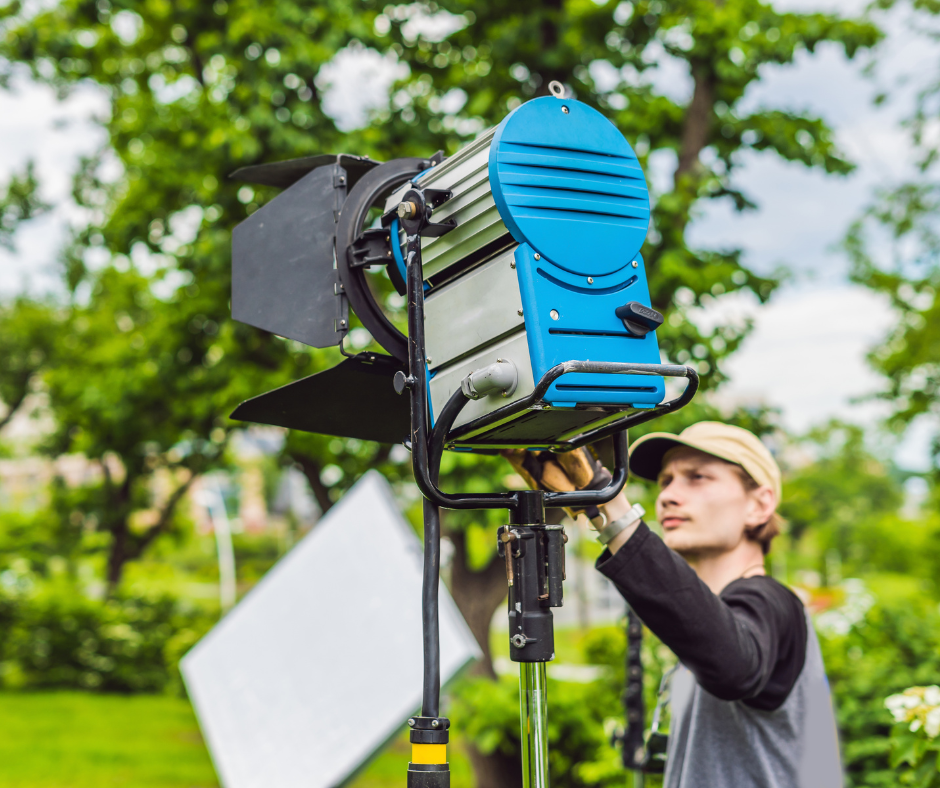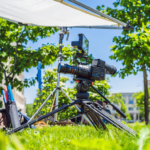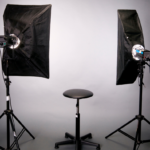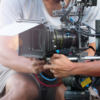
Exploring Cinematography Lighting Techniques: Illuminating the Art of Visual Story telling
Cinematography, often referred to as the art of getting moving images, relies heavily on the interplay of light and shadow to convey emotions, set moods, and narrate stories. Through careful use of lighting techniques, film makers can change scenes into nice visual experiences that engage with audiences. In this article, we’ll delve into the world of cinematography lighting techniques, shedding light on their significance, types, and how they combine to the magic of film making.
 What are the 10 Film Lighting Techniques?
What are the 10 Film Lighting Techniques?
Film lighting encompasses a range of techniques that shape how scenes are shown. From the dramatic chiaroscuro of film noir to the soft and dreamy lighting of romantic comedies, here are 10 needed lighting techniques employed in cinematography:
- Three-Point Lighting: This classic technique involves three key lights – the key light, fill light, and backlight – to create depth and dimension while showing the subject.
- High Key Lighting: Ideal for light-hearted genres, this technique employs bright and even lighting to lessen shadows and enhance a cheerful atmosphere.
- Low Key Lighting: Often found in thrillers and horror films, low key lighting uses strong shadows and lesser illumination to create suspenseful and mysterious scenes.
- Chiaroscuro Lighting: Derived from art, this technique points the contrast between light and dark, evoking intense emotions and highlighting specific elements.
- Natural Lighting: Utilizing available natural light, this technique produces a genuine and authentic visual aesthetic that connects viewers with reality.
- Soft Lighting: Achieved through diffusers or bounce surfaces, soft lighting reduces harsh shadows and creates a gentle, romantic ambiance.
- Hard Lighting: This technique, characterized by strong, focused light sources, produces sharp shadows and adds drama and intensity to scenes.
- Backlighting: Placing the light source behind the subject results in a halo-like effect, emphasizing contours and adding a sense of depth.
- Motivated Lighting: Lighting that appears to come from natural sources within the scene, to enhance realism and immersion.
- Candlelight Lighting: Mimicking the warm, flickering glow of candlelight, this technique adds a touch of nostalgia and intimacy to scenes.
What is the Lighting of Cinematography?
The lighting of cinematography involves strategically positioning light sources to craft the desired visual mood and atmosphere. By using varying strength, angles, and colors of light, cinematographers can feature actors, objects, and spaces, adding to the overall story telling process.
Why Do We Use Lighting Techniques in Cinematography?
Lighting techniques serve as a director’s palette, allowing them to paint scenes with emotion, symbolism, and depth. By altering lighting setups, film makers can control the audience is focus, evoke specific feelings, and guide the story’s development. This visual language enables the changing of a simple setting into a rich and immersive world that resonates with the audience.
What Are the 3 Main Lights Used in Cinematography?
In cinematography, the three primary lights are the key light, fill light, and backlight. The key light is the primary source, casting a powerful illumination on the subject. The fill light softens shadows and balances the key light’s strength. The backlight adds separation between the subject and the background, creating depth and stopping the scene from appearing flat.
What is the Most Common Type of Lighting in Cinematography?
One of the most common lighting techniques is the Three-Point Lighting setup. It’s widely used due to its ability to highlight subjects while keeping a steady, natural look. This technique’s three lights work in tandem to shape the subject. Taking off harsh shadows and creating a sense of footage.
 What is the Basic Lighting Technique?
What is the Basic Lighting Technique?
At its core, the basic lighting technique includes getting a single key light to illuminate the subject. This simple procedure allows for quick setups and a natural appearance. Making it fit for documentary-style shoots or scenes asking lesser usage.
In the world of film making, lighting techniques from Austin Visuals 3D Animation are more than just complex procedures. They’re an art form that change stories into touching visual experiences. By learning these techniques, film makers can wield the power of light. To guide audiences on emotional journeys and create lasting cinematic memories.
For more information on how Austin Visuals 3D Animation can enhance your visual story telling through creative lighting and animation. Visit us at Austin Visuals 3D Animation. To discuss your next project, reach out to us at [email protected] or call (512) 591-8024.
Remember, effective cinematography lighting techniques aren’t just about illuminating a scene; they’re about illuminating the heart and soul of your story.

 What are the 10 Film Lighting Techniques?
What are the 10 Film Lighting Techniques? What is the Basic Lighting Technique?
What is the Basic Lighting Technique?


